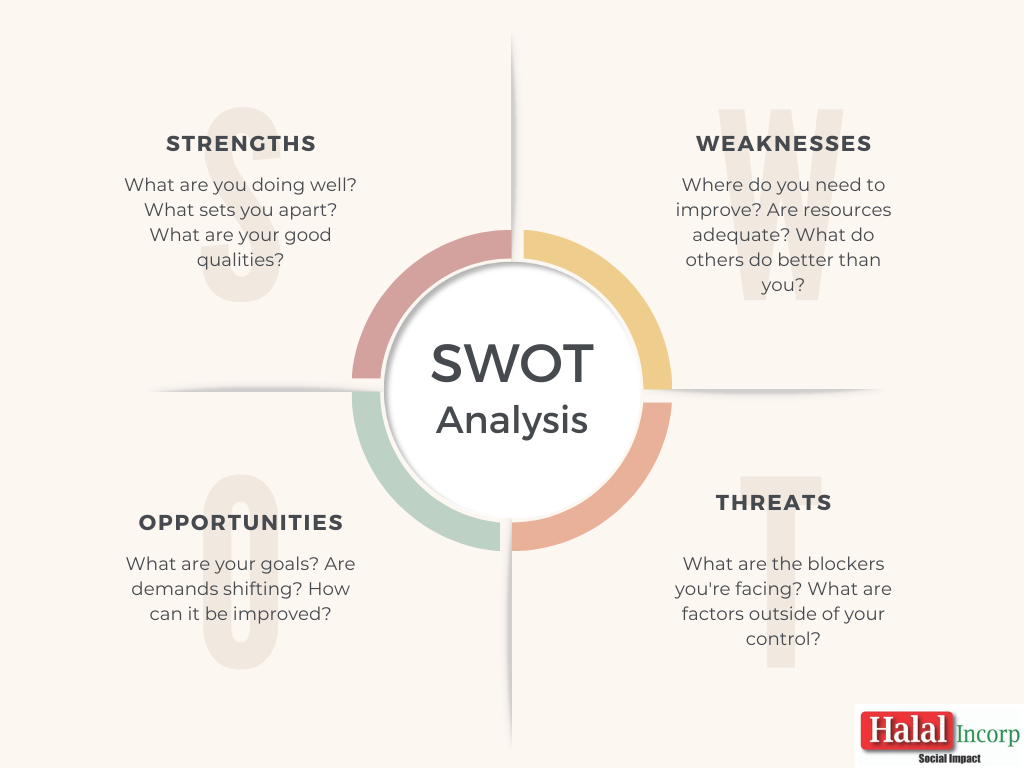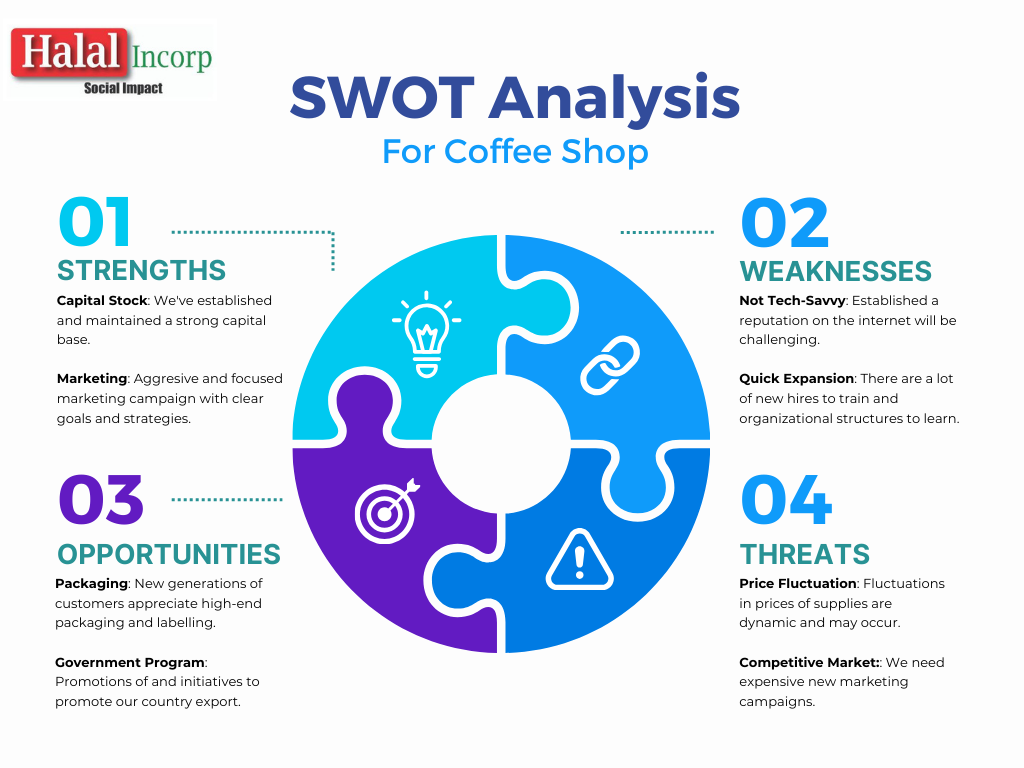Swot Analysis Examples For Students
Understanding the Power of SWOT Analysis in Business Strategy
By Staff Writer, Halal Incorp
In the dynamic landscape of the business world, organizations constantly face challenges and opportunities that require strategic decision-making. One powerful tool that helps businesses navigate these complexities is the SWOT analysis.
Swot Analysis Examples For Students
SWOT, an acronym for Strengths, Weaknesses, Opportunities, and Threats, is a strategic planning tool that provides a comprehensive overview of a business’s internal and external factors. In this article, we will delve into what a SWOT analysis entails, how it is conducted, and its significance in shaping effective business strategies.
Swot Analysis Examples For Students


Understanding the Components of SWOT:
- Strengths:
The first component of a SWOT analysis is identifying the strengths of a business. These are the internal attributes and resources that give a company a competitive edge in the market.
Strengths can encompass various aspects, such as a strong brand reputation, innovative products or services, talented workforce, efficient processes, or robust financial performance.
For example, a tech company might consider its skilled software development team, cutting-edge technology, and established customer base as strengths.
Recognizing and leveraging these strengths is crucial for maintaining and enhancing a competitive position in the market.
- Weaknesses:
On the flip side, weaknesses are internal factors that hinder a company’s performance and competitive advantage.
These could include outdated technology, inadequate human resources, poor management, or financial constraints. Identifying weaknesses is vital for developing strategies to overcome challenges and improve overall organizational performance.
Swot Analysis Examples For Students
Continuing with the tech company example, a potential weakness might be a lack of diversity in the workforce or a slower response to market trends.
Addressing these weaknesses can lead to more resilient and adaptable business operations.
- Opportunities:
Moving on to external factors, opportunities are elements in the external environment that a business can capitalize on to achieve growth and success.
These can arise from market trends, changes in consumer behavior, emerging technologies, or even regulatory shifts. Recognizing and seizing opportunities is essential for staying ahead in the competitive landscape.
Swot Analysis Examples For Students
In the context of our tech company, an opportunity might arise from a growing demand for a specific type of software or an emerging market with untapped potential. Strategically aligning with these opportunities can propel a business to new heights.
- Threats:
Threats are external factors that pose challenges and risks to a business. These could include economic downturns, intense competition, changes in regulations, or shifts in consumer preferences.
Identifying threats allows businesses to proactively develop strategies to mitigate risks and safeguard their operations.
For the tech company, a threat could be the emergence of a competitor with a more advanced product or changes in government regulations affecting the industry.
Anticipating and responding to these threats is crucial for maintaining resilience in the face of uncertainties.
The SWOT Analysis Process:
Conducting a SWOT analysis involves a systematic approach to gathering and evaluating information. Here’s a step-by-step guide:
- Define the Objective: Clearly outline the purpose of the SWOT analysis. Whether it’s for a specific project, a department, or the entire organization, a well-defined objective guides the analysis.
- Gather Information: Collect relevant data on the internal and external factors affecting the business. This may involve reviewing financial statements, market research, customer feedback, and competitor analyses.
- Brainstorm: Engage key stakeholders, such as employees, managers, and executives, in a brainstorming session to identify and list all potential strengths, weaknesses, opportunities, and threats.
- Categorize and Prioritize: Organize the identified factors into the four categories and prioritize them based on their significance and impact on the business.
- Develop Strategies: Once the SWOT matrix is complete, use it as a foundation for developing strategies. Leverage strengths to capitalize on opportunities, address weaknesses to overcome threats, and find ways to convert weaknesses into strengths.
SWOT Analysis Coffee Shop Example


Significance of SWOT Analysis in Business Strategy:
- Strategic Planning: SWOT analysis is a fundamental tool in the strategic planning process. It provides a comprehensive overview that helps organizations align their internal capabilities with external opportunities, creating a roadmap for success.
- Risk Management: By identifying and addressing weaknesses and threats, businesses can proactively manage risks and minimize potential negative impacts. This risk mitigation strategy enhances organizational resilience.
- Decision-Making: SWOT analysis aids decision-makers in making informed choices by providing a structured assessment of the business environment. It ensures that decisions are aligned with the organization’s strengths and opportunities.
- Resource Allocation: Understanding strengths and weaknesses helps organizations allocate resources effectively. By investing in areas of strength and addressing weaknesses, businesses can optimize their resource utilization.
- Adaptability: In the ever-changing business landscape, adaptability is key to survival. SWOT analysis fosters adaptability by allowing businesses to respond promptly to emerging opportunities and threats.
A SWOT analysis is a powerful tool for businesses seeking to navigate the complexities of today’s dynamic marketplace.
By systematically evaluating internal strengths and weaknesses alongside external opportunities and threats, organizations can develop informed strategies that drive success.
Regularly revisiting and updating the SWOT analysis ensures that businesses remain agile, adaptable, and well-positioned to thrive in an ever-evolving business environment.
Featured Image Source: Click Here




